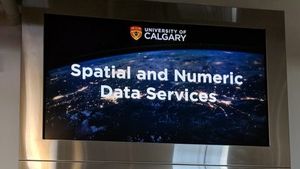My former colleague and network resident, Andy Powell, advocates strongly that public events should publish a conference tag, a virtual venue to which event amplifying network activity like blog posts, tweets, images and so on can cluster.
It’s easy to forget, but I’d go as far as saying that the tag is almost as important as the venue. In fact, in a sense, the tag becomes the virtual venue for the event’s digital legacy. [eFoundations: Tags as virtual venues]
For a network resident this may make complete sense; to others, it may seem overstated.
I raise this in the context of the Libraries Australia 2008 Forum. They have gone the extra step of pulling that network amplification into a single page.
This is what people have posted about the 2008 Libraries Australia Forum. If you are posting about the forum, please tag your blog posts, presentations or flickr photos laf2008. If you are using twitter, use the tag #laf2008 in your tweets. [2008 Libraries Australia Forum – from the web]
Now, at the time of writing, the network amplification seems largely to be the work of one person. I don’t think this is a particular issue: whatever the level of participation, the organizers are to be commended for taking this extra step I think.
However, it does raise for me an interesting question about the relative balance in conference audiences between ‘network residents’ and ‘network visitors’, or, more broadly, the relative balance between these categories in the general use of our network services. (For those that are not familiar with this helpful distinction, see Dave White’s discussion and my comments made after I read about it in Andy’s post.)
I know from my own experience that the balance is very different in different audiences. In some audiences there are likely to be bloggers; in others it is very unlikely. In some audiences, there may be people who will take pictures and post them; in others it is very unlikely. And from a service point of view, I think that it would be very interesting to get a sense of how the users of a library catalog, for example, break down along a resident/visitor spectrum.
Incidentally, see Paul Hagon’s report of Eric Lease Morgan’s remarks about the catalog, and his account of my current colleague, Thom Hickey, talking about authorities and identities. I was also interested in the note about about university and researcher identity in the context of Simon Porter’s presentation about the University of Melbourne; I hope they make the presentations available. The presentations are now available.
Note: Eric’s own discussion and a copy of his presentation are here.
laf2008


